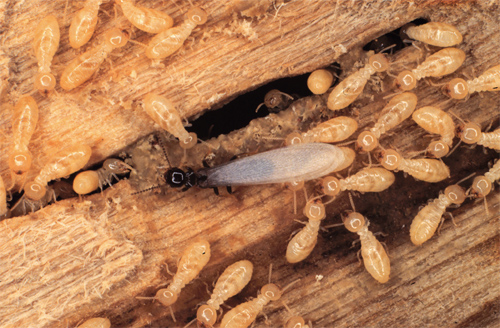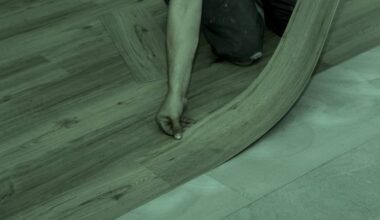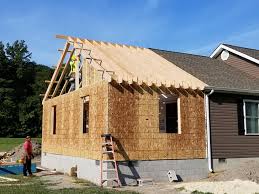Did you know that some termites have wings? Flying termites, which can be seen at specific times of the year, could indicate an issue. Nobody wants to discover flying termites within their home because they inflict significant structural damage as they consume wood.
In fact, a well-run Formosan termite colony can include as many as several million termites, and those termites can eat more than 25 pounds of wood in a year. Termites frequently go undiscovered, quietly causing serious issues that necessitate costly repairs. How, then, can one get rid of flying termites in their home? Read on to learn more about flying termites, what they look like, and how to naturally get rid of them both in the home and outside.
What Are Flying Termites?
Swarmers and alates are additional terms for flying termites. These termites reproduce, and their only task is to leave the colony, locate a spouse, and start a new colony where they will raise thousands, occasionally even millions, of baby termites.
Depending on the region of the country you’re in, and the time of year, if you see a flying termite, it’s probably a subterranean termite. These termites travel in mud tubes and dwell in underground colonies.
Subterranean termite swarmers often form and manifest themselves between three and five years in a colony. Swarmers typically emerge from the earth, tree stumps, or fissures and holes in a building’s foundation.
Geographical location, temperature, rainfall, and humidity are a few of the variables that affect when a swarm will occur. In the southern United States, many underground termites will start to swarm in the spring when there is a lot of rain, temperatures are rising, and humidity levels start to rise.
What Do Flying Termites Look Like?
Flying termites typically have six legs and are light gold. They may typically be identified by their thick, one-piece body and two tiny antennae, typically straight with a slight bend. They have two sizable, translucent wings on either side of their bodies that can reach a maximum size of three centimeters each.
Australia is home to flying termites. Termite colonies thrive in warm environments because they prefer an average temperature of 25 to 28 degrees. In Australia, when summertime approaches, the tropical downpours provide the ideal environment for termite reproduction. A termite colony is composed of three groups, and the species that can develop wings and fly is the subterranean termite. The future queens and kings of the termite colonies for the following season can only be developed sexually by this particular group of termites.
How to Prevent Flying Termites
It is much simpler to prevent flying termites than to get rid of them alone. Here are some of our top preventative measure suggestions for making your home less appealing for flying termites to nest if you’re looking for ways to get rid of them.
- Please remove any mulch outside your house and any tree stumps or woodpiles close to it. Adding flooring to the soil might also aid in termite control.
- To prevent termites from entering your home, keep an eye on the moisture levels there. You can avoid the hassle of finding a major leak and termites by completing routine plumbing inspections. Regular plumbing inspections and prompt leak repair are necessary to stop termites from exploiting the leak as a moisture source
- Maintain your home’s repairs since termites adore rotting wood. Make sure you continue to fix rotten wood. This also applies to your porch and deck areas.
Related Articles: CRAWL SPACE DEHUMIDIFIER: 5 Best Picks In 2023
- Check your homes inside and outside for flying termites and other pests regularly and get rid of them. The prognosis will be better the earlier you identify pests.
- The smell of vinegar or orange oil repels many termites. To deter termites from entering your home, consider combining orange oil or vinegar with little water in a spray bottle and misting the exterior of your house and popular entry spots with this homemade solution.
- Termites are drawn to light, just like many other insects. To prevent unnecessarily attracting insects, only switch on outside illumination when necessary and leave it off when not in use. Alternatively, you can switch to sodium vapor lamps, which are generally thought less enticing to bugs.
- Stop termites from entering your home by sealing any openings or cracks outside your house that they might use to get in. Avoid leaving windows unscreened because doing so invites flying termites and other pests inside.
How to Get Rid of Flying Termites
We want to be very clear about something before we discuss termite control.
There is a serious issue if you notice flying termites swarming around your house. The reproductive components of the termite colony are flying termites. After the original termite colony has existed for a number of years, they normally spread their wings to look for a new location for a new colony. In other words, if you see flying termites close to your house, you probably already have a serious termite infestation, and your house is in serious trouble.
Because termites can quickly cause substantial damage to your house that will cost far more to restore than the cost of the pest control service, our advice is to call an exterminator immediately to deal with your termite activity. Large, difficult-to-manage termite colonies may need dangerous chemicals, drilling, fumigation, and other treatments that the average homeowner is ill-equipped or untrained to carry out.
Here are some possibilities if you decide to try a home remedy to get rid of flying termites:
#1. Bug zappers
Termites, like many insects, enjoy the light and will be drawn to the light from the bug zapper. The insect zapper will then electrocute the flying termite. To ensure that they focus on the bug zapper, turn off as many other lights as possible.
#2. Boric acid
Boric acid kills various insects by covering the outside of the pests, which causes dehydration and ultimately results in the insect’s death. Both indoors and outdoors, boric acid is available in powder form at numerous retailers and online. If you detect winged termites anywhere, try dusting the powder outside your home and at other entry points like doors and windows.
#3. Cardboard traps
Use a cardboard box to create a do-it-yourself termite trap. Termites consume cellulose in wood, but since cardboard sometimes contains cellulose, it is a good way to draw termites. Place sheets of the cardboard box that have been cut into sheets and wetted in areas where termites are active. You can spray termites with insecticide to kill them when they land on the cardboard and start eating it.
Invest in a termite bait station and install the baits around your house following the instructions. The attractant on the baits can swiftly entice termites, making this a useful method for long-term termite treatment. Please be aware that this is not a safe option if you have young children or dogs because they might consume the bait station.
#4. Termiticide
Termiticide can be bought from numerous retailers and is available in various forms, including a foamy treatment. Foaming treatments are a flexible option for treating termites because they can be applied within walls, under bathtubs, flooring, and other structures. A conventional termiticide can be used as a barrier treatment and may even claim that it would eliminate certain pests, including bed bugs and carpenter ants.
Please be aware that depending on local laws and restrictions, some of these therapies might not be available or permitted in your state or region. Before starting your pest control program, always be sure to familiarize yourself with the regulations in your state.
How To Get Rid of Flying Termites in the Home Naturally
As a homeowner, you probably want chemical-free termite treatment or termite baiting. Don’t worry; there are more termite control options outside store-bought termiticide. Termite repellant or bait that you produce yourself are two options.
#1. DIY Termite Trap
By using this technique, flying termites may not emerge in the future. Additionally, it gives termites cellulose.
Supplies required include:
- Box
- Water (1 gallon)
- Procedure
- Break the box into several sizable pieces by collapsing it.
- The cardboard pieces can be stacked on top of one another.
- Position the box stack outside.
- Pour the gallon of water over the cardboard slowly to soak it completely. Termites will then eat the moist cardboard. When enough of them eat the cardboard, use a natural bug poison to eradicate them.
#2. Rubber mulch
Tire waste is used to make rubber mulch. Any hardware store will have it for sale.
This approach functions more as a termite deterrent. Subterranean termites won’t be drawn to your house or yard as a source of food because rubber doesn’t contain cellulose.
#3. Cedar mulch
The hues and resins of this mulch are repulsive to subterranean termites. You could use cedar mulch to surround your house instead of organic soil.
#4. Orange Oil
Termites are fatally affected by orange oil. Oranges have a particular chemical that gives them their distinctive citrus scent, and termites should never come in contact with this compound.
Spray the orange oil onto any winged termite you observe by pouring the oil into a spray bottle. It can be sprayed on flying termites, grounded ones, and areas where termite activity is suspected.
Just remember that subterranean termites cannot be eradicated with orange oil; only dry wood termites can.
#5. Boric acid
Boric acid is available as a powder. In areas of the yard and soil where you think termites may be active, scatter the powder.
Flying termites can be contained, killed, and future ones will not emerge thanks to the use of boric acid. Every week and just after it rains, replace the acid.
We recommend scattering boric acid in your home to create a flying termite barrier naturally. These areas include your patio or deck, the surrounding pet doors, and the area around the vents in the basement.
Simply avoid using it on sensitive or edible plants. Additionally, keep pets and kids away from boric acid.
#6. Diatomaceous Earth
This technique functions like bait. By piercing their exoskeleton and dehydrating them, diatomaceous earth can kill termites. To get termites to go to the bait station, scatter the powder over places where you suspect termite activity. Remember that diatomaceous earth is frequently recommended for pests on the ground, so exercise patience when tackling flying termites.
#7. Useful nematodes
Beneficial nematodes are tiny, parasitic-looking worms. A nematode releases a bacteria that kills the host when it is inside the insect’s digestive tract. It may be possible to eradicate termite colonies nearby by introducing nematodes to the soil.
A bug zapper is another option for killing insects. If they’re already inside, you might use a UV insect zapper there or outside, but we only advise doing this to eliminate the last few.
Whatever approach you decide to use, always be cautious.
How to Get Rid of Flying Termites at Home
It would be best if you kept an eye out for indications of flying termite activities at home as a homeowner to get rid of them. These include mud tubes, which are frequently visible on the exterior of a structure and show where the pests are entering and exiting, in addition to swarmers. Due to termites’ ability to squeeze through tiny gaps in concrete slab foundations and mud tubes in these crevices, homes with these foundations are more prone to termite infestations.
If you discover termite swarmers within your home, an active colony is probably present. Getting a professional termite inspection done if swarmers are outside is worthwhile because you might also have an active colony in your house or close by.
Do the following to get rid of flying termites in your home naturally:
- Store your firewood outside of your home
- Ensure your foundation is at least four inches above the earth, and keep mulch away.
- Pay attention to drainage systems, and ensure that rainwater is directed away from your home
- Repair and remove leaks and moisture
How To Get Rid of Flying Termites Outside
Five techniques to get rid of flying termites outside your home include:
#1. Foam Termiticide
What it is: The foam termiticide Termidor includes the chemical fipronil, which paralyzes termites gradually and leads them to die. After you spray the foam and it evaporates, it leaves a residue that begins hurting termites as soon as they touch it.
How to utilize it: Spray Termidor foam (or a similar foaming termiticide) into any holes, cracks, or crevices where you suspect termites are hiding. Fill the space wall to wall and floor to ceiling with foam.
This termite treatment remains effective for about one month. Repeat every month as long as termite activity persists.
#2. Termite baits
What it is: Termite baits operate just like other insect baits. Foraging termites are drawn to the cellulose (what termites eat) in the bait. But the food supply is loaded with a chemical that inhibits the termites’ growth, so they die when they try to molt.
The toxin is slow-acting, so sick termites have time to transport the poisoned food back to their colony and disseminate it to even more termites. Baits are usually more effective than contact pesticides at wiping out huge numbers of termites.
How to use it: Purchase termite baits and follow the instructions on the packaging to place them outside. Set up bait stations around your home’s foundation and locations where you’ve spotted termites. The bait stations should be no more than 10 feet away.
#3. Termiticide barrier
What it is: Liquid termiticides (active ingredient fipronil) and granular termiticides (active ingredient imidacloprid) are undetectable to termites. Thus, they will not avoid regions treated with these pesticides.
When termites come in touch with either insecticide, they finally die. But first, they take the poison with them and transmit it to the remainder of the colony.
How to apply it: If using granular termiticide, spread it around your home’s foundation, rotting trees, woodpiles, and other wooden structures.
If utilizing liquid chemicals, build a type of moat around your base. Let the chemicals soak into the ground, where they will come in contact with subterranean termites (if that’s the termite species you have).
Creating a termite barrier using termiticides ensures that even if some termites get near or inside your home, they’ll die soon after.
#4. Nematodes
What it is: Beneficial nematodes are microscopic parasites that prey on termites. They enter the termites’ bodies and release bacteria that poison them to death within a few days. Nematodes are long-lasting because they breed and multiply on their own.
Note: Nematodes are the finest natural alternative to chemical termite treatments.
How to utilize it: You’ll find nematodes online at numerous garden supply stores. Mix the nematodes with water according to the directions on the specific product you buy. Apply the mixture to gardens, mulch beds, tree stumps, and other areas where you’ve spotted termites.
#5. Boric acid
What it is: Boric acid is a processed form of the natural mineral boron. When termites take boric acid, it screws up their capacity to absorb nutrition and impairs their nervous system, culminating in death.
How to use it: Boric acid normally comes as a powder. You can either spray the powder undiluted with a powder sprayer or mix 1 teaspoon of boric acid for every cup of water. Either way, sprinkle the boric acid around sections of the yard where you suspect termites.
Spray boric acid again every three to five days until termite activity in your yard stops. Beware that boric acid can dry up and damage plants and grass.
Conclusion
Having termites is never fun. Nobody wants to feel like their home is under attack, nor should homeowners worry about parts of their housebreaking apart from termite damage. While there are DIY alternatives to get rid of flying termites in your home naturally, professional pest control services are strongly suggested because termites are expansive pests that are difficult to exterminate.
Not only that, but the appearance of flying termites in or near your home signals an already established termite colony close by, which could already be harming your home. Don’t hesitate to reach out to a pest control professional today to have your home examined for termites and quickly treated.
FAQs
What causes flying termites in your house?
When a termite colony swarms, flying termites can be seen. Among other things, excessive rain and warm, muggy weather can cause swarms. When mature, colonies generate flying male and female termites for reproduction.
Do flying termites go away on their own?
Once airborne, they normally spend no more than an hour in the air. After that, they lose their wings, fall to the ground, and eventually die from exposure or other termite-eating animals.
Do flying termites mean you have termites?
When the situation is favorable, flying termites, including male and female termites, will swarm into your house if a colony exists. Termites are likely a problem in your home for a long time if you find flying termites there.
Are flying termites seasonal?
Although termites are active all year round, flying termites, with their shed wings and droppings, is most noticeable in the warmer months. Termite swarms signal the onset of termite season.






